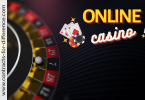When does bold investing cross the line into gambling? It’s a question that many financial experts and everyday investors grapple with.
The confusion can come when blurring the line between intention and outcome. It’s possible that a well-thought-out investing strategy yields a loss that week; while it’s possible that winning big on Red 36 at Roulette is still gambling.
But, this distinction is in part helped by the fact that we all know that casino activity is gambling – that association is already strong. We know how popular a low deposit casino UK is, but what about tech stocks, or beginners taking on large exposure with CFDs? Where is the line between gambling and investing?
What is Gambling?
Gambling is the act of staking something valuable on an event with an uncertain outcome, hoping to gain something of greater value. It does sound a little bit like investing when you phrase it like that, so there must be something else.
The term originates from the Old English ‘gamenian’, meaning ‘to play, jest, or be merry’. Today, it’s commonly associated with casino games and sports betting. This does help get a feel for the fact that a lot of gambling activity has something else, other than to win money. If you lose, you’re still meant to have walked away having had fun. Losing on an investment, however, is never fun, and ought not to be a form of entertainment.
Legally and socially, gambling is often defined by three elements: consideration (a wager), chance, and a prize. Ultimately, it’s the “chance” element that plays a big role in separating it from investing.
Characteristics of High-Risk Investing
High-risk investing comes in many forms, but it’s often characterised by volatile assets, leveraged trading, and complex financial instruments. Contract for Difference (CFD) trading is often an example of this. They’re popular because of the risk, as you can gain greater exposure and potentially profit from both rising and falling markets.
Other high-risk investments include options trading, where you bet on future price movements, and short-selling, where you borrow shares to sell, hoping to buy them back cheaper later. These strategies can offer high rewards but also carry significant risks of substantial losses, especially for inexperienced investors.
The difference between gambling and high-risk investing is often perceived to be where the activity lies on the scale of chance and skill. CFD investors, while conceding that there is chance and unpredictability involved, can at least claim that skilled strategy is necessary to be successful.
Psychological Factors in High-Risk Investing
The psychology behind high-risk investing shares striking similarities with gambling behaviours. One key factor is the dopamine rush. When we make a successful trade, our brains release dopamine, creating a feeling of euphoria that can be addictive. This is why it’s so important to suppress this when investing, whilst it is embraced when gambling. This is a useful red flag.
Fear of Missing Out (FOMO) is another powerful driver. In today’s social media-driven world, stories of overnight millionaires can fuel a desire to jump into risky investments without proper research.
Overconfidence bias often leads investors to overestimate their ability to beat the market, as well as a lack of research. The FCA found that 44% of investors didn’t research their investments due to it being too complicated and time-consuming. Is buying a stock without any research ‘investing’? Or is this rolling the dice?
Lastly, loss aversion – which is the tendency to feel losses more strongly than equivalent gains – can lead to irrational decision-making. Investors might hold onto losing positions too long or make increasingly risky bets to recoup losses, behaviours also common in problem gambling.
Perception vs Reality
As we know, investors are encouraged to escape the biases of our own mind. And, as previously mentioned, many people believe that their gambling or investing activity comes down to where along the scale it lays of skill and chance. But there’s an issue…
Many beginners are overconfident and will jump into complex trading strategies that they do not fully understand. As far as they are concerned, they are investing, even if it’s not particularly successful. For an outsider who can see their gaps in knowledge, they may see them as relying wholly on chance, and thus call it out for being gambling.
The other issue is with brand new assets like crypto, where they haven’t been around long enough for competent strategies to develop, and the market itself lacks historical data. So, some people rule this asset class out as gambling because the notion that a sophisticated strategy can be employed is inherently flawed.
This taps into how there is some level of subjectivity to gambling, and the importance of knowing our own limitations. Investors owe it to themselves to not jump into asset classes or techniques they do not fully understand yet, else it becomes a simulation of investing that verges on gambling.
Final Word
Self-awareness is key in assessing not only our activity, but our motivations. The actual level of risk associated with the asset isn’t the determining factor. If we find ourselves letting emotions dictate our decisions, we are not only failing our pre-determined strategy but are showing symptoms of gambling behaviour. Likewise, the same can be said for deploying strategies prematurely that aren’t fully understood or tested.







